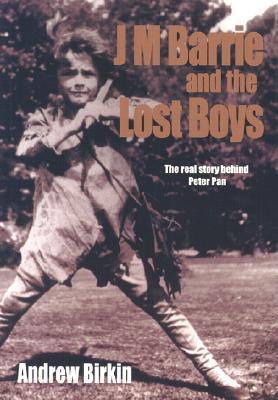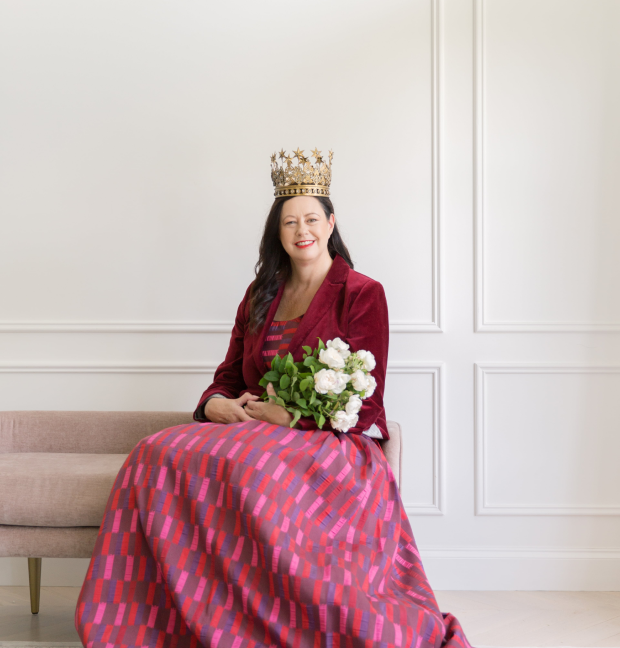
The Blurb (from Goodreads):
J. M. Barrie, Victorian novelist, playwright, and author of Peter Pan or The Boy Who Wouldn’t Grow Up, led a life almost as magical and interesting as as his famous creation. Childless in his marriage, Barrie grew close to the five young boys of the Llewelyn Davies family, ultimately becoming their guardian and devoted surrogate father when they were orphaned. Andrew Birkin draws extensively on a vast range of material by and about Barrie, including notebooks, memoirs, and hours of recorded interviews with the family and their circle, to describe Barrie’s life and the wonderful world he created for the boys.
Originally published in 1979, this enchanting and richly illustrated account is reissued with a new preface to mark the release of Neverland, the film of Barrie’s life, and the upcoming centenary of Peter Pan.
My Thoughts:
This is the book which inspired the movie Finding Neverland, about the family of boys who inspired J.M. Barrie to create Peter Pan. It’s a troubling read, and one that has divided the world into those who believe the author was a paedophile who stalked the Llewelyn Davies family and shadowed their live with grief and tragedy; and those who believe he was an asexual innocent who created a work of genius and has been cruelly misunderstood by modern audiences with a Freudian obsession with libido.
There is evidence for both arguments.
Here are a few interesting points:
J.M. Barrie was only 5’ 3’’. Some believe he suffered from psychogenic dwarfism, brought on by the tragic death of his 14-year-old brother David when he was six. His mother Margaret was stricken with grief, and little Jamie used to dress up in his brother’s clothes to comfort her (or so he wrote). However, there is no real evidence to support either the existence of psychogenic dwarfism, or that it was the cause of Barrie’s short stature (he was born into a poor Scottish family at a time when the average height for men in Britain was 5’5”). However, the psychic shock of his brother’s death does seem to be the source of his obsession with boys and the preservation of their innocence.
In 1894, he married an actress named Mary Ansell. They did not have any children, and it was implied at their divorce in 1909 that the marriage was never consummated. Barrie wrote in his (believed-to-be-autographical) novel Tommy and Grizel (1900): ‘Grizel, I seem to be different from all other men; there seems to be some curse upon me … You are the only woman I ever wanted to love, but apparently I can't.’
Barrie met five-year-old George, four-year-old Jack and baby Peter Llewellyn Davies in 1898, in Kensington Gardens. He befriended them, entertained them with tricks with his dog, told them stories and waggled his eyebrows. He met their mother Sylvia at a dinner party soon after; it was not long before they were holidaying together at his country retreat. Soon two more boys were born: Michael and Nico. Barrie played wild adventurous games with the five boys and photographed them, often in the nude. He then created two photobooks of their summer adventures, one for him and one for their father Arthur, entitled The Boy Castaways. Arthur accidentally left his copy on the train.
In 1901, Barrie wrote a book for adults called The Little White Bird. It introduced the character of Peter Pan, who flew from his cradle at the age of seven to Kensington Gardens and was taught to fly by the fairies. He is described as ‘betwixt-and-between’ a boy and a bird.
In the book, a boy named David is befriended by the narrator, who pretends to have a son of his own who died. This lie creates an empathetic connection with David’s mother, who pities him. The narrator – a man much like J.M. Barrie – persuades her to allow him to have her son for a sleepover: ‘David and I had a tremendous adventure. It was this – he passed the night with me... I took [his boots] off with all the coolness of an old hand, and then I placed him on my knee, and removed his blouse. This was a delightful experience, but I think I remained wonderfully calm until I came somewhat too suddenly to his little braces, which agitated me profoundly... I cannot proceed in public with the disrobing of David.’
The phenomenal success of The Little White Bird encouraged Barrie to turn the story of Peter Pan into a stage play entitled Peter Pan, or The Boy Who Wouldn't Grow Up. It premiered in London on 27 December 1904 in London. It too was a huge critical and commercial success. Barrie's publishers, Hodder and Stoughton, then extracted the relevant chapters of The Little White Bird and published them in 1906 under the title Peter Pan in Kensington Gardens, with magical illustrations by Arthur Rackham.
Tragically, Arthur Llewellyn Davies died from cancer of the jaw in 1907. Three years later Sylvia died of lung cancer. Close to her death, Sylvia wrote: ‘What I wd like wd be if Jenny wd come to Mary & that the two together wd be looking after the boys & the house.’ (Mary was the boys' nanny; Jenny was Mary's sister.)
Barrie transcribed this note and sent it to Sylvia’s mother, but he changed the name ‘Jenny’ to ‘Jimmy’ – his own name. As a consequence, he became guardian to the five orphaned boys.
Of the Llewellyn Davies boys, George died in the trenches in World War I at the age of 21. Jack died of lung disease aged 65. Peter was bullied mercilessly all through his school days as the original ‘Peter Pan’, which he called ‘that terrible masterpiece.’ He threw himself under a train at the age of 63. Michael – the most sensitive and brilliant of the boys, and Barrie’s most beloved – drowned in suspicious circumstances with his best friend (and possible lover) Rupert Buxton just before his 21st birthday. Nico (who was only one year old when Peter Pan became a stage hit) had a happy life and marriage, and died at the age of almost 77. He wrote to Andrew Birkin, the author of this biography: ‘I don't believe that Uncle Jim ever experienced what one might call a stirring in the undergrowth for anyone – man, woman, adult or child. He was an innocent...’
I am usually of a decisive nature, with strong opinions. But I cannot determine for myself which of the two portrayals of J.M. Barrie is more likely. Creepy paedophile-stalker, or asexual innocent genius?
Of course, we never can know. Peter Llewellyn Davies burned most of Barrie’s letters to Michael, and we have no evidence but supposition.
But the book has haunted me since reading it.
Another interesting book is Van Gogh's Ear - read my review here:
https://kateforsyth.com.au/what-katie-read/book-review-van-goghs-ear-the-true-story-bernadette-murphy

